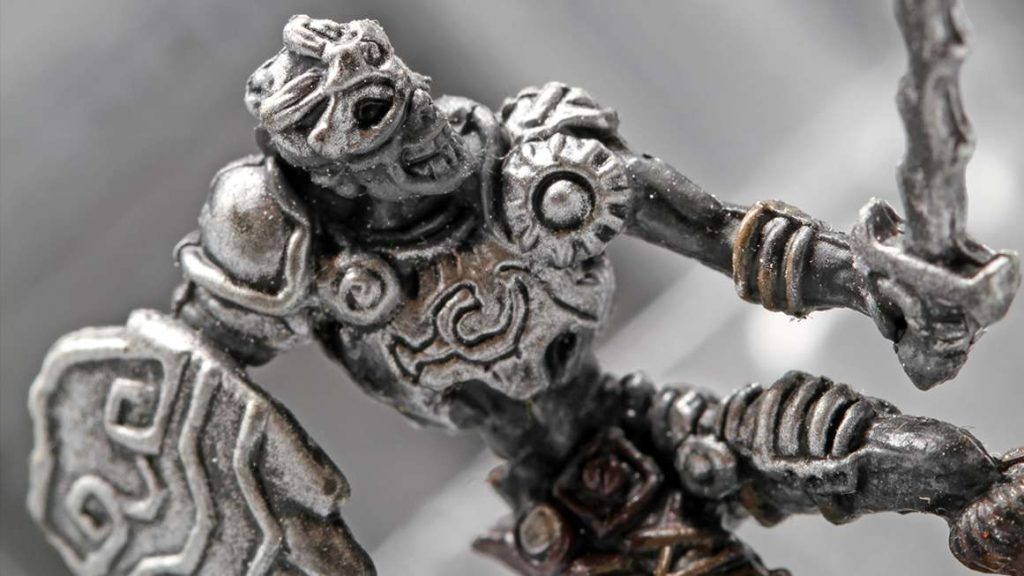This year marks the 50th anniversary of the original edition of Dungeons & Dragons (D&D), the granddaddy of tabletop role-playing games and one of the urtexts of nerd culture.
The golden anniversary could hardly have come at a better time; over the past decade, the game has undergone an unexpected renaissance, reaching levels of cultural saturation and sales that exceed even its 1980s heyday. Critical Role, a live-play D&D podcast, sold out London’s 12,000-seat Wembley Arena last October. Even a passingly good Dungeons & Dragons movie helped mark the game’s half-centennial.
If it seems strange that something as anachronistic and exquisitely dorky as D&D is popular again, consider that those qualities may be exactly why people are drawn to it. The Atlantic recently reported that Americans are suffering a “kind of ritual recession, with fewer community-based routines” and face-to-face meetups. It’s perhaps not surprising that D&D has become a redoubt for old-fashioned, goofy fun in our digital age.
But there’s another reason D&D has weathered 50 years of critical successes and failures: It radically empowered its fans to create their own adventures and games, keeping the tabletop gaming hobby alive even when its flagship was floundering. The 50-year history of D&D is an entrepreneurial success story, yes, but it’s also a story of the advantages of an open-source, loose approach to intellectual property, and the disadvantages of being miserly with it.
When Gary Gygax, a Wisconsin war-gaming enthusiast, published the first edition of D&D in 1974, he was unemployed and cobbling shoes in his basement for spare cash. He had to recruit business partners and form their own company, TSR, to publish the game, because every major board game company passed on it.
In fairness to the suits who turned down a golden goose, D&D would have sounded incomprehensible on paper in 1974. You played fantasy characters, who worked together? Where is the game board you play on? No one wins? Wait, what’s this about a “dungeon master”?
But the genius of D&D is better demonstrated than explained, and that’s how the game spread—from friend group to friend group, slowly at first and then faster as the number of Johnny Appleseeds lugging their Dungeon Master’s Guides around grew exponentially. It turned out that when you sat people down, told them they were wizards and knights and what-have-you, and got them rolling dice, they loved it. And they loved it across age groups: children, teens, and adults.
The revolutionary idea of D&D was its “expansive and generous belief in its players’ creative potential,” as Iwrote in a 2018 Reason feature on the history of the game. It used the combat mechanics of tabletop war games, but as a framework for what was in essence a collaborative fantasy story generated by the players’ choices. Dice were used to simulate randomness and risk, so a player had the freedom to, say, pickpocket a nobleman, but they might have to roll well to avoid being caught. Dungeon masters, the neutral referees who lead D&D sessions, had even more freedom. They could create their own campaigns and even whole fantasy worlds.
This encouragement of creativity extended to D&D‘s business model. In its early days, TSR gave its blessing to unofficial fan magazines and helped distribute unlicensed third-party content from small-press publishers.
Besides mutual advantage, TSR had good reason to not be too stingy with its copyright. The content of D&D was a mishmash of fantasy tropes and races that Gygax himself lifted from classic works in the genre. For example, the earliest versions of D&D used the term “hobbits,” until TSR received a strongly worded letter from the company that owned the rights to J.R.R. Tolkien’s works. Ever since then, the fantasy worlds of D&D have been populated by “halflings” instead.
Things changed when tabletop role playing became a multimillion-dollar industry in the 1980s. TSR’s position toward its intellectual property became increasingly litigious, roughly at the same time as its popularity plateaued and its product quality began declining. Relations between the company and tabletop gamers hit a low point in 1994, when TSR sent cease-and-desist letters to numerous websites hosting harmless D&D fan content, accusing them of infringing on the company’s copyright.
When the third edition of D&D was released in 2000, under new ownership by the company Wizards of the Coast, it included a significant olive branch to the hobbyists that TSR had alienated: a “perpetual, worldwide, non-exclusive license” allowing other publishers to use a chunk of the core D&D rules to create new games and material, royalty-free.
The Open Gaming License (OGL), as it became known, was a huge success, spawning classic computer games, reams of D&D material, and new role-playing games like Pathfinder. Today there are Kickstarters raising millions of dollars for third-party supplements to the current Fifth Edition D&D. (I have even self-published a D&D adventure online using the OGL. It sells enough units every year to support my gaming habit.)
So the entire tabletop gaming industry understandably flew into a barbarian rage last year when news leaked that Wizards of the Coast was going to “update” the OGL. The update included voiding the two-decade-old agreement and its guarantee of perpetuity.
Wizards of the Coast is scheduled to release a new edition of D&D later this year, and it was tired of seeing competitors use its secret sauce for free. But this felt like a betrayal to the independent artists, writers, and designers in the industry, who in an open letter compared Wizards of the Coast to a “dragon on top of the hoard, willing to burn the thriving village if only to get a few more gold pieces.”
Wizards of the Coast backed down, but the controversy led several of the biggest third-party publishers to announce they were creating their own role-playing games unconnected to D&D. Paizo, publisher of Pathfinder, also created a new system-agnostic license for independent game creators, the Open RPG Creative License (ORC). When the new edition of D&D is released this year, it will have more competition, and game masters will have more freedom to choose which adventures they take their friends on outside the copyright owner’s fantasy reservation.
One suspects the late Gygax, who was ousted from TSR in the 1980s and then sued for trying to publish his own games, would only approve.
The post <i>Dungeons & Dragons</i> at 50: You Can’t Copyright Fun appeared first on Reason.com.







